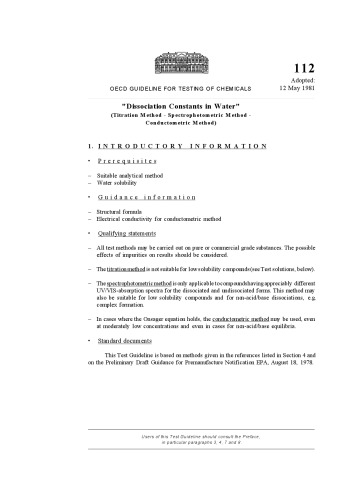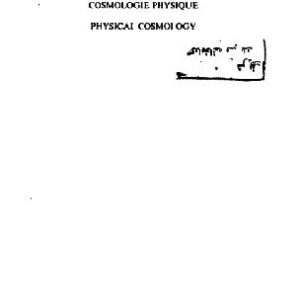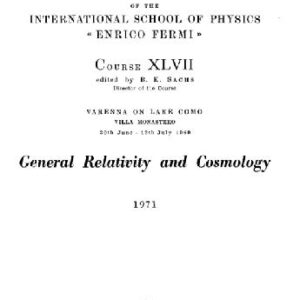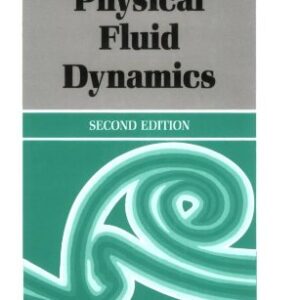This Test Guideline describes the methods allowing the determination of the dissociation constants in water. The dissociation is the reversible splitting into two or more chemical species which may be ionic. The determination of the dissociation constant requires a measure of the concentrations of the dissociated and undissociated forms of the chemical substance. From a knowledge of the stoichiometry of the dissociation reaction the appropriate constant can be determined. In the particular case described in this Guideline the substance is behaving as an acid or a base, and the determination is most conveniently done by determining the relative concentrations of ionised and unionised forms of the substance and the pH of the solution. The relationship between these terms is given in the equation for pKa. Some compounds exhibit more than one dissociation constant. Some of the methods described are also suitable for non-acid/base dissociation. There are two basic approaches to the determination of pKa. One involves titrating a known amount of substance with standard acid or base, as appropriate; the other involves determining the relative concentrations of the ionised and unionised forms and their pH dependence. Methods based on those principles may be classified as titration, spectrophotometric and conductometric procedures. ?Read more…







Reviews
There are no reviews yet.